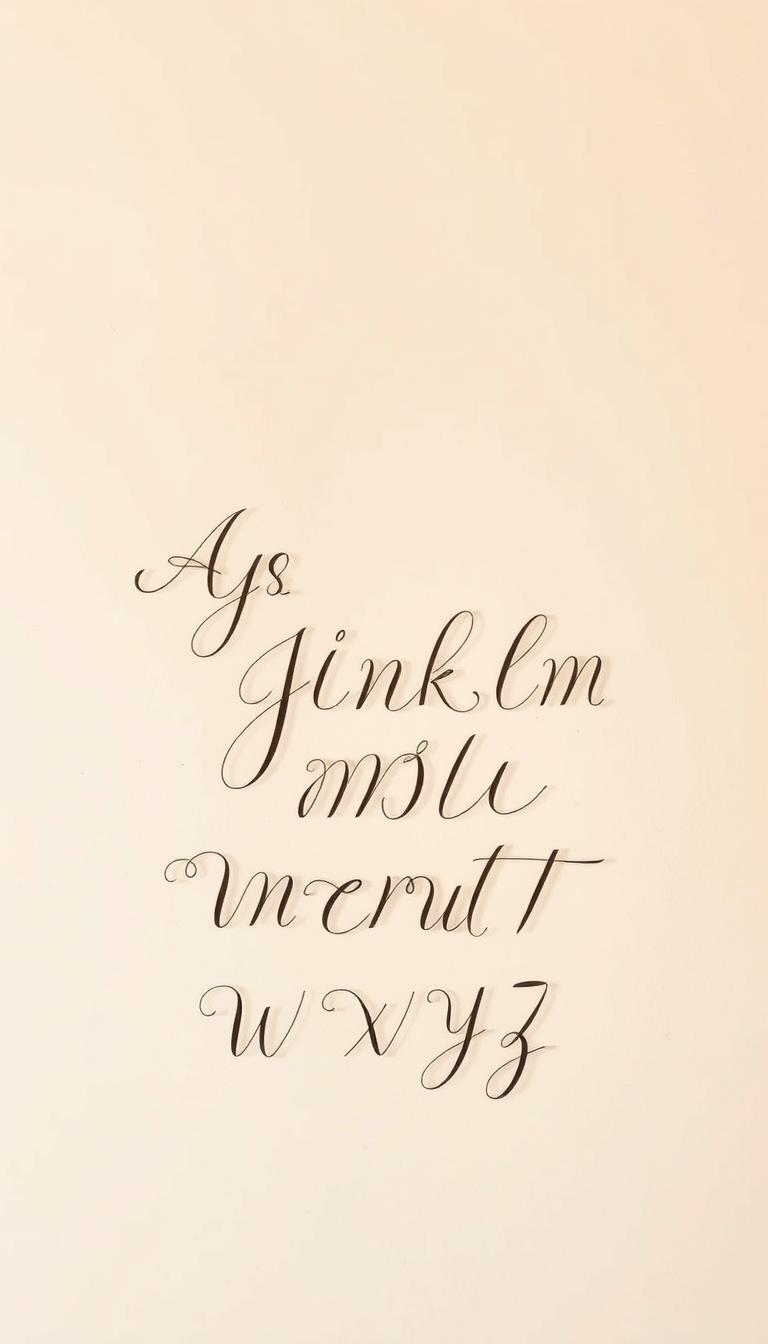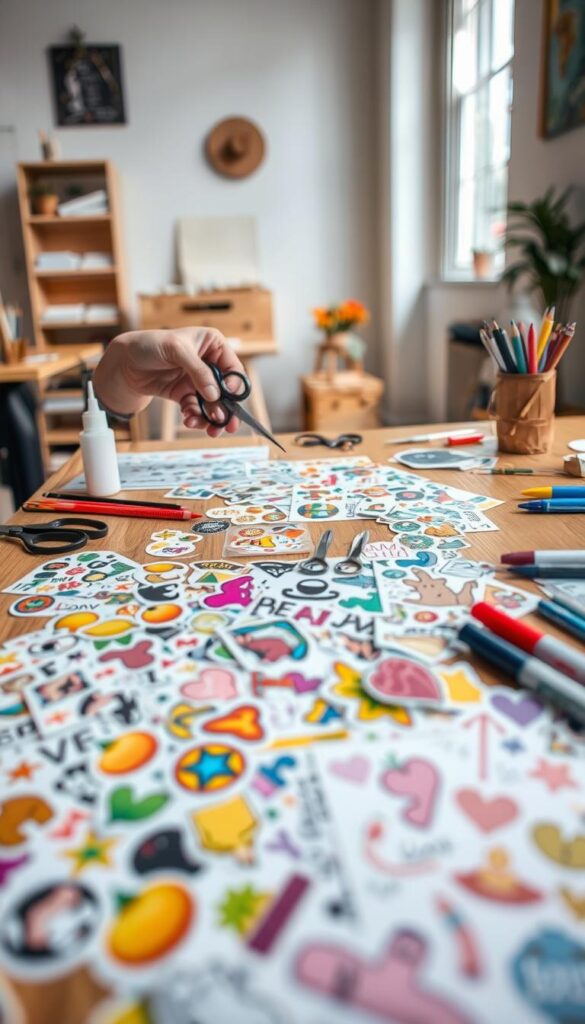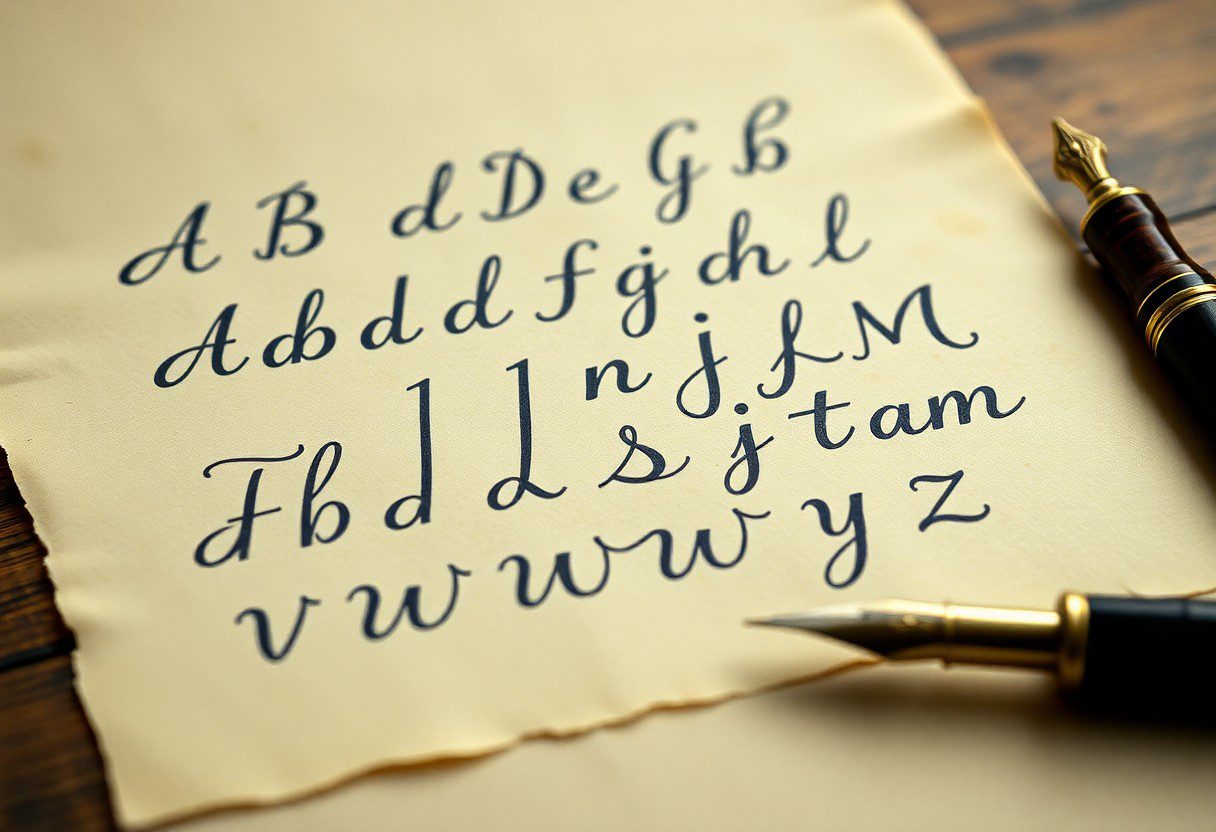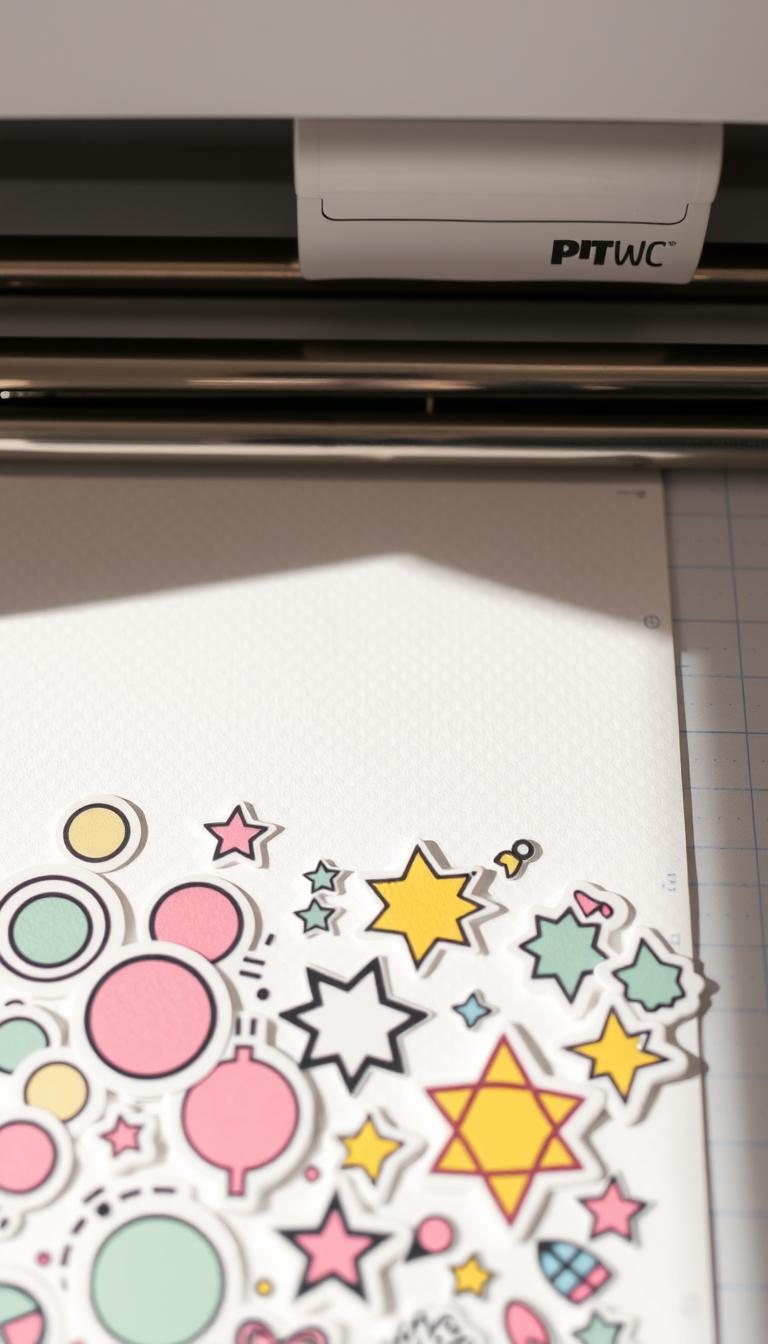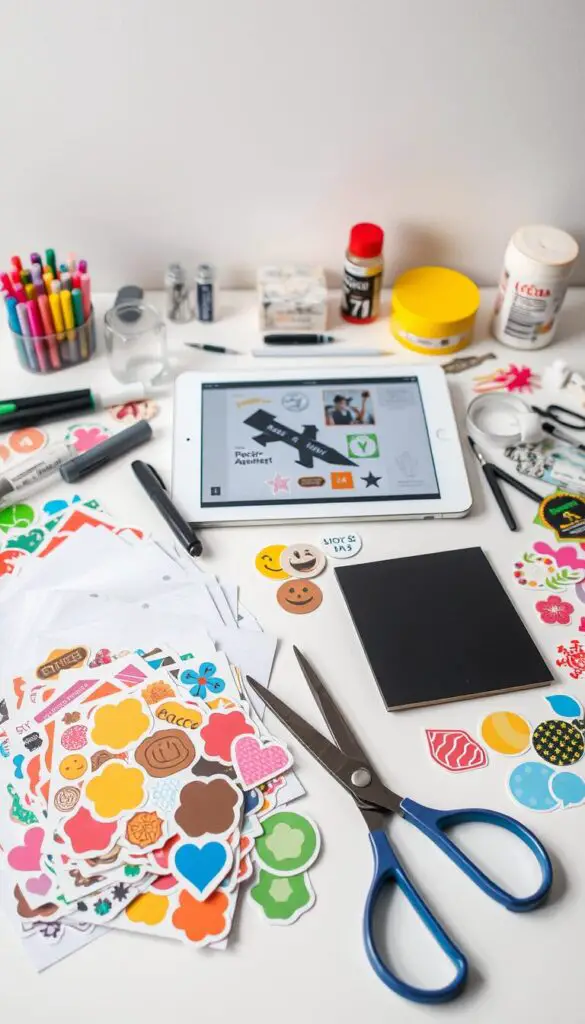Did you know that over 70% of crafters today prefer creating their own custom designs? DIY sticker-making is a fun and creative way to express yourself, whether for personal use or to enhance your brand. With just a few basic materials, you can turn your ideas into unique stickers that stand out. Learn How to Create Stickers at Home.
No expensive machinery is needed! All you’ll need is a computer, some design software, and everyday items like scissors and tape. This process allows you to experiment with labels, decals, and scratch-resistant styles, giving your creations a professional look.
From sketching your own designs to using templates, the possibilities are endless. This guide will walk you through each step, making it easy for beginners and seasoned crafters alike. Let’s dive into the world of DIY sticker-making and bring your ideas to life!
Key Takeaways
- DIY sticker-making is a creative and accessible activity for everyone.
- Basic materials like scissors, tape, and a computer are all you need.
- Design software and templates make the process simple and fun.
- Custom stickers can be used for personal projects or branding.
- No expensive machinery is required to achieve professional results.
Introduction to DIY Sticker-Making
Custom stickers are more than just decorations; they’re a way to express creativity. Whether you’re an artist, a parent, or a small business owner, creating your own stickers offers endless possibilities. The best part? You don’t need fancy equipment or a big budget to get started.
Understanding the Benefits of Making Your Own Stickers
DIY sticker-making is a cost-effective and rewarding activity. You can save money while producing unique designs tailored to your needs. For families, it’s a fun way to bond and create personalized art. For businesses, it’s a smart branding option that stands out.
Using simple materials like paper and tape, you can turn your ideas into tangible designs. This process also helps you understand the properties of different materials, like printer compatibility and surface adhesion.
Exploring Creative Possibilities Without a Machine
You don’t need advanced machinery to create professional-looking stickers. With a standard printer and design software, you can produce high-quality results. Hand-drawn art, digital images, or even photos can be transformed into stickers.
Here are some creative options you can explore:
- Scratch-resistant styles: Perfect for long-lasting use.
- Decals: Ideal for decorating surfaces like laptops or water bottles.
- Personalized designs: Great for gifts or special occasions.
DIY sticker-making not only builds artistic skills but also encourages experimentation. It’s a flexible and accessible way to bring your ideas to life.
how to make stickers at home
Creating custom designs is a rewarding activity that doesn’t require expensive tools. With basic materials like paper, tape, and a printer, you can turn your imagination into tangible decals. This step-by-step guide will walk you through the process, ensuring professional results every time.
Step-by-Step Process from Design to Print
Start by gathering your materials. You’ll need wax paper, scissors, and packing tape. A computer with design software is essential for creating your artwork. Once your design is ready, print it on standard paper.
Next, seal the printed image with packing tape. This step protects the design and ensures durability. Carefully cut out the decal, following the edges precisely for a clean finish. Your custom creation is now ready to use!
Easy Methods Using DIY Techniques and Tools
No cutting machine? No problem! Household items like scissors or craft knives work just as well. For a budget-friendly option, use Mod Podge to seal your designs instead of tape. This method is perfect for beginners and seasoned crafters alike.
Here’s a quick comparison of sealing methods:
| Method | Pros | Cons |
|---|---|---|
| Packing Tape | Quick, durable, and affordable | Can be tricky to apply evenly |
| Mod Podge | Flexible and easy to use | Requires drying time |
| Clear Tape | Simple and readily available | Less durable for long-term use |
Experiment with different materials and techniques to find what works best for your project. Whether you’re decorating a laptop or creating personalized gifts, DIY decals are a fun and creative way to express yourself.
Ready, Set, Design: Planning Your Custom Sticker
Planning your custom sticker design is the foundation of a successful project. This stage ensures your sticker turns out exactly as you envisioned. With the right tools and materials, you can create professional-looking designs without stress.
Utilizing Canva and Other Design Tools
Design software like Canva simplifies the creative process. It offers user-friendly templates and drag-and-drop features, making it perfect for beginners. You can also explore other programs like Silhouette Studio or Design Space for more advanced options.
These tools allow you to refine your design, adjust colors, and ensure your image translates well to print. Matching color profiles and resolution ensures your sticker looks sharp and vibrant.
Choosing the Right Template and Sticker Paper
Selecting the perfect template is crucial. It should match your sticker’s purpose and style. Whether it’s for personal use or brand promotion, templates provide a solid starting point.
Equally important is the type of paper you use. Matte, glossy, and vinyl options each have unique benefits. Matte paper offers a smooth finish, while glossy adds shine. Vinyl is durable and ideal for outdoor use.
By carefully planning and using the right tools, you can create high-quality stickers that stand out. This approach saves time and ensures your project turns out perfectly.
Tools, Materials, and Techniques for Perfect Stickers
Crafting custom decals requires the right tools and techniques for flawless results. Whether you’re a beginner or a seasoned crafter, having the correct setup ensures your designs look professional and last long. Let’s explore the essential equipment and methods to achieve stunning results.
Essential Equipment: Printers, Cutting Tools, and More
The foundation of any project is the right printer. Inkjet printers are ideal for vibrant colors, while laser printers offer sharp, smudge-free results. For precise cutting, invest in quality scissors or an exacto knife. Advanced crafters might consider machines like Cricut or Silhouette for intricate designs.
Here’s a quick list of must-have tools:
- Printer: Inkjet or laser for high-quality prints.
- Cutting Tools: Scissors, craft knives, or cutting machines.
- Design Software: Programs like Canva or Silhouette Studio for creating your image.
Sealing and Finishing: From Packing Tape to Mod Podge
Sealing your design ensures durability and a polished look. Packing tape is a quick and affordable option, while Mod Podge offers flexibility for larger projects. Clear tape works for simple tasks but may not last as long.
Here’s a comparison of sealing methods:
| Method | Pros | Cons |
|---|---|---|
| Packing Tape | Durable and cost-effective | Can be tricky to apply evenly |
| Mod Podge | Flexible and easy to use | Requires drying time |
| Clear Tape | Simple and readily available | Less durable for long-term use |
For added durability, consider laminate options. This step protects your design from scratches and water damage, making it ideal for outdoor use or high-traffic items like water bottles.
Choosing the right material is equally important. Matte paper offers a smooth finish, while glossy adds shine. Vinyl is perfect for outdoor use due to its weather-resistant properties. Test different options to find what works best for your project.
With the right tools and techniques, you can create professional-looking designs that stand out. Whether for personal use or business branding, these tips ensure your project is a success.
FAQ’s
To make DIY stickers, you’ll need adhesive sticker paper, a printer with ink, a cutting mat, and optional tools like a pair of scissors or a cutting machine. For custom products, you might also want to use graphic design software like Canva’s free app or Adobe Illustrator.
Yes, you can create waterproof stickers by using waterproof sticker paper and applying a lamination layer. This makes your stickers dishwasher safe and ideal for outdoor applications.
You can upload your designs to various design platforms such as Canva or Adobe Photoshop to create custom stickers. Ensure your layout is set correctly for the sticker sheets you plan to use.
Matte sticker paper has a non-reflective finish, making it great for writing on, while glossy sticker paper has a shiny finish that enhances colors and graphics. Choose based on your project needs and the look you want for your custom products.
Yes, using a cutting machine like a Cricut or Silhouette can help you make homemade stickers with precision. These machines can handle thicker materials and intricate designs, making it easier to create professional-looking stickers.
When designing your stickers, consider the size, layout, font, and color scheme. Make sure your graphic elements are high resolution to ensure a quality print. This will help your stickers stand out and be effective as labels or custom products.
To make your stickers more durable, use thicker adhesive sticker paper and apply a lamination layer. This not only protects the print but also makes your stickers thicker and easier to handle.
You can sell your custom stickers on platforms like Etsy or your own website. Marketing your stickers effectively on social media can also help reach a wider audience.
Simple, bold designs with clear graphics tend to work best for stickers. Consider using illustrations, quotes, or patterns that resonate with your target audience. Custom products that reflect trends or personal interests can also be very popular.
Absolutely! You can create stickers from your own illustrations by scanning or photographing them, then uploading them to a design app for editing. Customize the layout and size as needed before printing on your sticker sheets.
Conclusion
Creating your own custom designs is a fun and rewarding way to express creativity. With simple tools like a printer, paper, and tape, you can bring your ideas to life. From choosing the perfect template to sealing your design, each step is an opportunity to explore your artistic side.
Whether for personal projects or business branding, DIY sticker-making offers endless possibilities. The process is accessible to everyone, regardless of skill level. With a bit of planning and attention to detail, you can achieve professional-quality results.
Ready to get started? Gather your materials, unleash your creativity, and enjoy the journey of crafting unique stickers. Share your creations and inspire others to try this fun and fulfilling activity!
